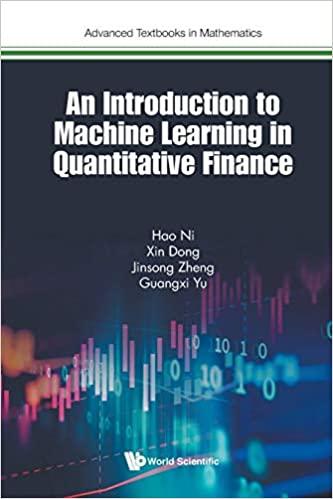Answered step by step
Verified Expert Solution
Question
1 Approved Answer
Consider an economy with perfect financial markets that extends for three dates ( t = 0 , 1 , 2 ) with 4 date -
Consider an economy with perfect financial markets that extends for
three dates with date states of nature
The common information structure for investors is as follows. At
investors know that the true state is an element of
At investors know whether the true state is an element of
or an element of At investors know
exactly which among is the true state. It is known that
markets are dynamically complete, and there are many assets traded
at date including assets which pay no dividends before and
some financial derivatives written on unit of asset zerocoupon
bonds maturing at dates and and so on Moreover, no arbitrage
opportunities exist at any time.
The following table gives some but not all information about the
prices of traded assets:
In the above table, for is the price of asset at
the timeevent node Let and be the futures
price and forward price stated in a contract created at the timeevent
node for delivery of unit of asset at date You are told that
Also, let be the date price of the defaultfree
zerocoupon bond maturing at date with face value equal to one dol
lar.
i Then Consider an economy with perfect financial markets that extends for
three dates with date states of nature
The common information structure for investors is as follows. At
investors know that the true state is an element of
At investors know whether the true state is an element of
or an element of At investors know
exactly which among is the true state. It is known that
markets are dynamically complete, and there are many assets traded
at date including assets which pay no dividends before and
some financial derivatives written on unit of asset zerocoupon
bonds maturing at dates and and so on Moreover, no arbitrage
opportunities exist at any time.
The following table gives some but not all information about the
prices of traded assets:
In the above table, for is the price of asset at
the timeevent node Let and be the futures
price and forward price stated in a contract created at the timeevent
node for delivery of unit of asset at date You are told that
Also, let be the date price of the defaultfree
zerocoupon bond maturing at date with face value equal to one dol
lar.
i Then
ii Consider a coupon bond This coupon
bond has a date price equal to
No
iii
and
iv Mr N knows at date that he is endowed with dollars at
date and he wants to consume a sure amount at date by trading
only at date Then the maximum amount that can consume
at date is
v The date price of asset is such that
and No

Step by Step Solution
There are 3 Steps involved in it
Step: 1

Get Instant Access to Expert-Tailored Solutions
See step-by-step solutions with expert insights and AI powered tools for academic success
Step: 2

Step: 3

Ace Your Homework with AI
Get the answers you need in no time with our AI-driven, step-by-step assistance
Get Started


